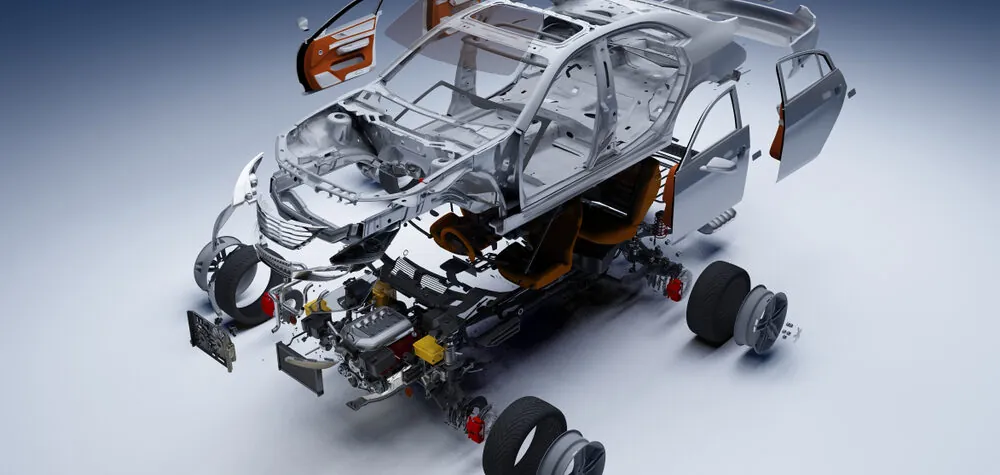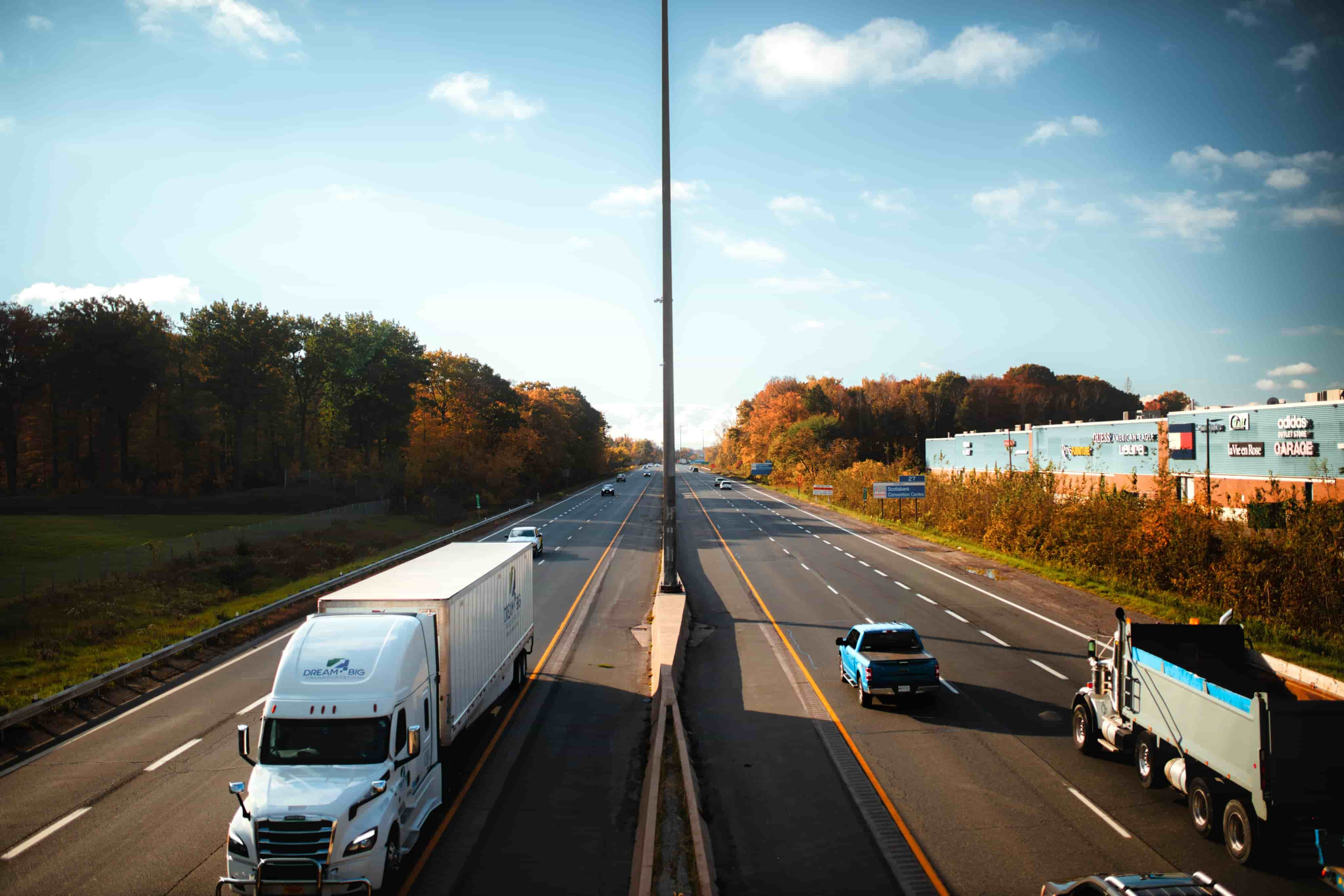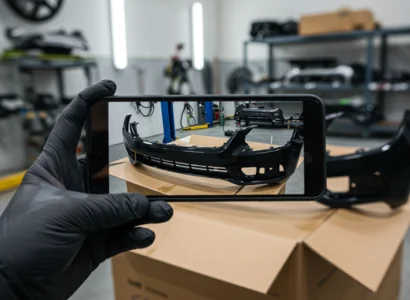
Shipping Auto Body Parts
Reliable Freight Shipping for Auto Body Parts
Compare rates for shipping auto body parts from top US carriers online. Save time and money using our instant freight quote calculator.
How to Ship Auto Body Parts
Whether you’re buying or selling car parts, finding a partner that makes shipping auto body parts painless and affordable has never been easier.
First, let’s take a look at the various auto body parts that are commonly shipped, then learn how to pack them, and finally, learn how to get a quote and get started. We are here to help you find the best solution and the cheapest way to ship auto body parts.
Auto body parts that are commonly shipped through FreightCenter include bumpers, fenders, hoods, doors, and grills, as well as larger components like pickup beds, hard tops, and plows. We also ship seats, soft tops, radiator supports, wheels, tires, and full auto body sections.
More than likely, you will be shipping these parts on an LTL (less-than-truckload) haul. However, if you are shipping a large number of auto-body sections, you may need a full truckload or FTL.
Regardless, your FreightCenter freight experts can help you choose the best option.
Thousands of businesses trust FreightCenter to move their freight faster, smarter, and cheaper! From unbeatable rates to top-notch service, our customers are raving about their shipping success.
See why they keep coming back!
Award-Winning Service, Trusted by Shippers Everywhere!
- 2021, 2017 & 2016 Food Logistics’ Top Green Providers
- 2021 & 2018 Supply & Demand Chain Executives’ Pros to Know: Matthew Brosious
- 2020 & 2019 Top Food Logistics’ 3PL & Cold Storage Provider Award
- 2020 & 2019 Business Observer’s Top 500 Companies on the Gulf Coast
- 2020 & 2017 SmartWay® Transport Partner
- 2020 & 2017 Food Logistics’ Champions: Rock Stars of the Supply Chain
- 2020 Best of Palm Harbor Awards for Local Businesses
- 2017 Green Supply Chain Award from Supply & Demand Chain Executive
- 2017 Tampa Bay Business Journal Heroes at Work
- 2016, 2015, & 2012 Food Logistics Top 100 Software and Technology Providers
- 2013 Tampa Bay Business 100 by Tampa Bay Business Journal
- 2013 Top 100 Great Supply Chain Partners by SupplyChainBrain
- 2012 TIA Samaritan Award Honorable Mention
- 2012, 2011 & 2010 TBBJ Fast 50 Recipient
- 2013, 2011, & 2010 Diversity Business Top Businesses

How do I Select an FTL Carrier for Shipping Auto Body Parts?
FreightCenter’s Truckload division will help find the best carrier if your shipment requires an entire truck.
We maintain relationships with hundreds of regional and national freight trucking companies nationwide, all checking in with us regularly for available hauls.
Selecting a carrier with a regular route that aligns with your destination can also help cut costs.
Additionally, we can help you ship your auto body section or your entire specialty vehicle. If you have special requirements, such as a flatbed, RGN, or step deck, we’re here to help!
To learn more about FTL freight, call our Truckload shipping experts at 800.716.7608 or use our free online quote tool to get started immediately.
Additionally, if you own an auto shop, you can add a freight widget to your website to help make shipping more accessible for your customers. We provide shipping solutions for individual shippers to large enterprises.
How do I Ship Auto Body Parts via LTL Freight?
If you have a smaller load, LTL shipping is an excellent option because you only pay for the portion of the truck that your item occupies.
When choosing LTL freight, it is important to note that your shipment will travel with cargo from other shippers. It will stop frequently and be unloaded and reloaded several times throughout transit.
Therefore, it is important to pack your shipment carefully to prevent theft and ensure it will not be damaged along the way.
Package your auto parts in crates or bulk boxes. Bulk boxes are designed to fit onto pallets. The walls of the boxes can be double or even triple wall thick, often made of corrugated cardboard.
Bulk boxes have removable tops and are best used for any smaller parts traveling along with the shipment.
Larger parts should be packaged securely in crates for the highest level of protection. Most items will be moved with a forklift, so ensure that the packaging is sturdy and secure.
What Is the NMFC (Freight Class) for Auto Body Parts?
The freight class for shipping auto body parts depends on the parts being shipped. The following information comes from our Freight Class Lookup table:
- Body Sections | 250
- Chassis w/running components | 150
- Chassis, Frame(Gear Frame) | 300
- Doors or Tailgate (Boxed) | 150
- Engine Hoods, metal, in boxes/crates | 250
- Fenders, primed metal, in boxes/crates | 200
- Vehicle Hard Top | 300
FreightCenter offers finely tailored freight solutions for businesses and individuals shipping auto body parts. From single replacement panels to full skids of parts, we match your shipment with the ideal transportation mode. Backed by expert support and access to 50+ top-rated carriers.
Most auto body parts ship by truck. We offer: LTL Freight for individual parts or small boxes. FTL Freight for palletized or bulk orders. Flatbed Shipping for large or oddly shaped components like hoods or roof panels. Our team ensures your shipment is handled properly from pickup to delivery.
Need to ship auto body parts overseas? FreightCenter arranges ocean freight for international orders, including full-container or less-than-container loads (LCL). We also help with export documentation and customs coordination.
For large shipments traveling across the country, rail freight offers an economical and environmentally friendly option. We can coordinate intermodal solutions that combine rail and truck delivery to extend your reach while keeping costs low.
When speed matters, air freight is your fastest option. FreightCenter offers domestic and international air services. Ideal for time-sensitive auto body parts or shipments to global destinations where downtime isn’t an option.


Ready to Ship Auto Body Parts With Confidence?
No matter the part or destination, FreightCenter makes shipping auto body parts simple, affordable, and secure. Whether you’re a body shop restocking bumpers and panels, a distributor moving bulk parts, or an individual sending a custom fender across the country, we’ve got the tools, carriers, and experience to handle it all.
Get real-time rates, expert support, and tailored freight solutions designed specifically for auto body parts delivered safely and on schedule. Let our team manage the logistics so you can focus on what matters most: restoring, building, or selling quality vehicles.
Shipping Auto Body Parts FAQ
Q. How do I ship auto body parts by freight?
First, wrap parts in protective material like foam or bubble wrap. Crate or palletize larger or fragile components, label them clearly, and choose the appropriate freight mode. FreightCenter helps match your shipment with the best carrier for your budget and timeline.
Q. What’s the best packaging for shipping auto body parts?
Use foam padding, corner protectors, and shrink wrap for scratch-prone surfaces. Smaller parts can go in reinforced boxes, while large or heavy parts should be secured to pallets or crated for stability.
Q. How much does it cost to ship a car bumper or hood?
Shipping costs range from $300 to $1,500+, depending on the size, distance, packaging, and freight service used. Use our online quote tool for an accurate estimate.
Q. Can I ship multiple auto parts in one freight load?
Yes. You can palletize or crate multiple parts together to save on cost and minimize damage. FreightCenter helps consolidate your shipment efficiently.
Q. Do I need to crate auto body parts for shipping?
Crating is recommended for fragile or custom-painted items. It protects parts from shifting, scratching, and impact during transit.
Q. Is insurance included when shipping auto body parts?
Insurance is not automatically included, but FreightCenter offers affordable freight insurance to protect high-value parts during transit.
Q. What freight class are auto body parts?
Most auto body parts fall between Class 150–250 due to their size, fragility, and packaging type. FreightCenter can help classify your shipment correctly.
Q. Can I ship auto parts to a residential address?
Yes. FreightCenter offers residential freight delivery with liftgate and white glove service options if needed.
Q. What is the best freight mode for shipping auto body parts?
LTL is great for single or small items. FTL or flatbed is better for large or fragile freight. FreightCenter helps you select the right mode.
Q. How long does it take to ship auto body parts?
Transit time ranges from 2 to 7 business days, depending on distance and service level. Expedited shipping is available for urgent orders.
Q. Do I need a forklift or loading dock to receive auto parts?
If you’re shipping to a residential address or job site without equipment, request liftgate service during booking.
Q. Can I ship aftermarket or custom body kits?
Yes. Just provide accurate dimensions, weight, and handling needs. FreightCenter will find the right carrier.
Q. What carriers ship auto body parts?
FreightCenter partners with over 50 top-rated freight carriers experienced in handling fragile and oversized parts safely.
Q. Is expedited shipping available for body parts?
Yes. We offer expedited freight for urgent replacements or time-sensitive installations.
Q. Why should I use FreightCenter to ship auto body parts?
FreightCenter offers expert service, competitive rates, packaging guidance, and real-time tracking, ensuring your parts arrive safely and on time.
Top Tips for Shipping Auto Body Parts

Avoid Overhang on Pallets
Ensure that all parts fit completely within the edges of the pallet. Overhanging edges are more likely to get dented, scratched, or caught during loading and unloading.

Take Photos Before and After Packing
Documenting your shipment protects you in the event of a damage claim. Carriers and insurers often require “before” photos to validate that the part was packed correctly and left your facility in good condition.

Verify Dimensions and Weight After Packing
Measuring your shipment after it’s packed, including the pallet or crate, is essential for booking accurate freight. Incorrect specs are the #1 cause of reclassification fees and billing disputes.

